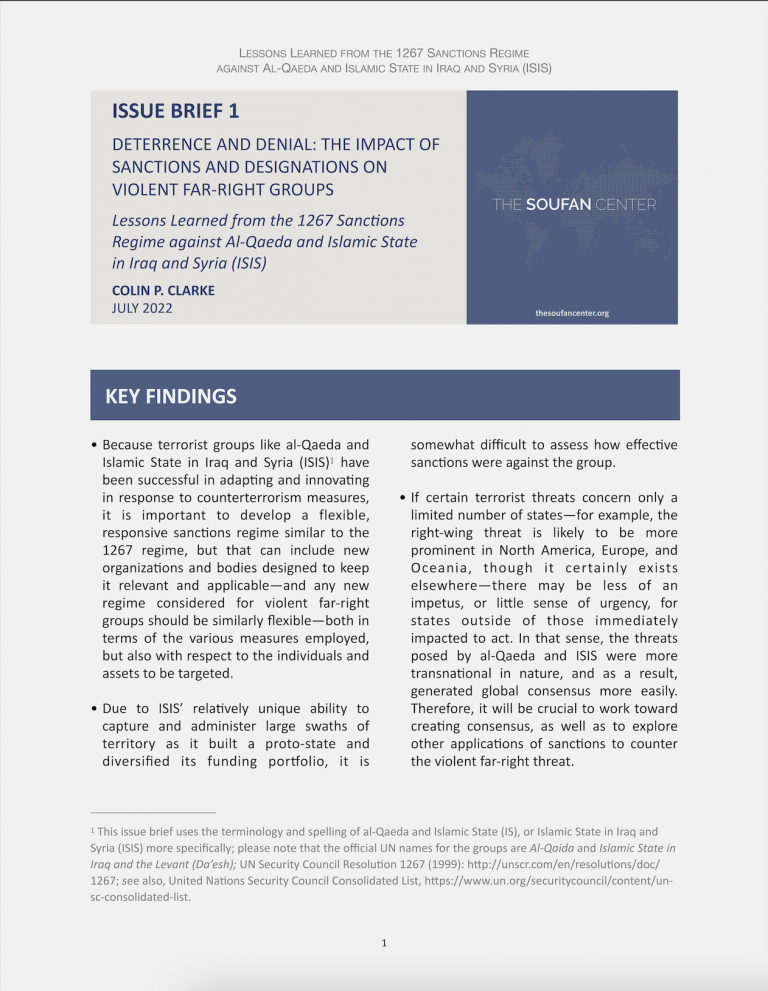RESEARCH
POSTED ON July 28, 2022
Lessons Learned from the 1267 Sanctions Regime against Al-Qaeda and Islamic State in Iraq and Syria (ISIS)

To fully understand what impact sanctions could have on violent far-right extremist groups it is essential to have a firm grasp on how sanctions have impacted other terrorist groups, particularly those with a transnational scope, including al-Qaeda, Islamic State, and their respective affiliates, franchise groups, and branches worldwide. These groups were the first to be deemed “threats to international peace and security” and subjected to a global sanctions regime established by the United Nations Security Council (UNSC). The sanctions regime pursuant to UN Security Council Resolution (UNSCR) 1267 (henceforth, 1267 regime) was established in the aftermath of the August 1998 East Africa Embassy bombings in Dar es-Salam, Tanzania and Nairobi, Kenya, perpetrated by al-Qaeda. One year later, in 1999, the Afghan Taliban, which was providing safe haven and sanctuary to al-Qaeda leader Osama bin Laden, refused to heed the Security Council’s warnings that it must take action against al-Qaeda and bin Laden. The Taliban refused, and the terror attacks continued, with the October 2000 USS Cole bombing in Yemen.
For tailored research and analysis, please contact: info@thesoufancenter.org